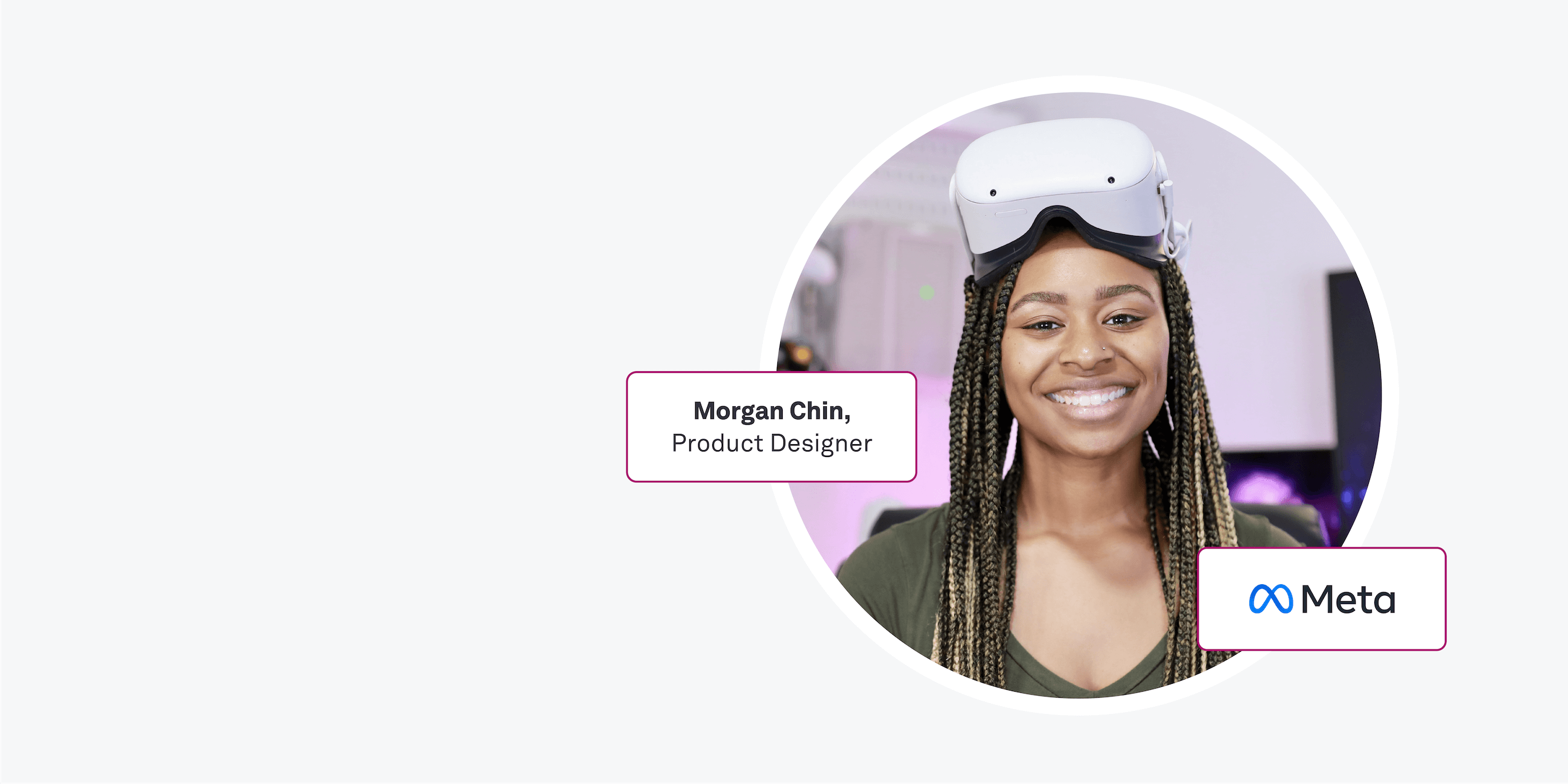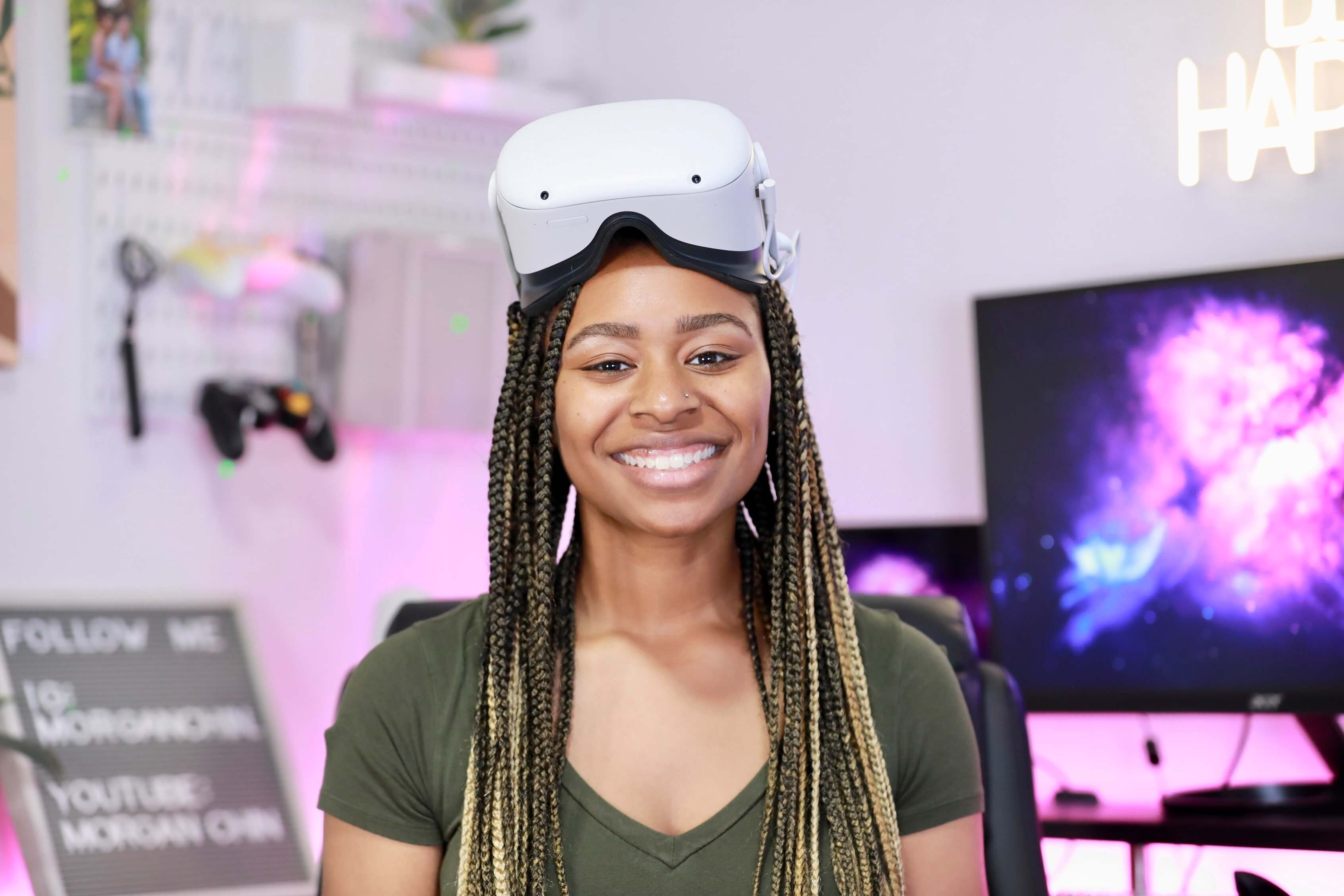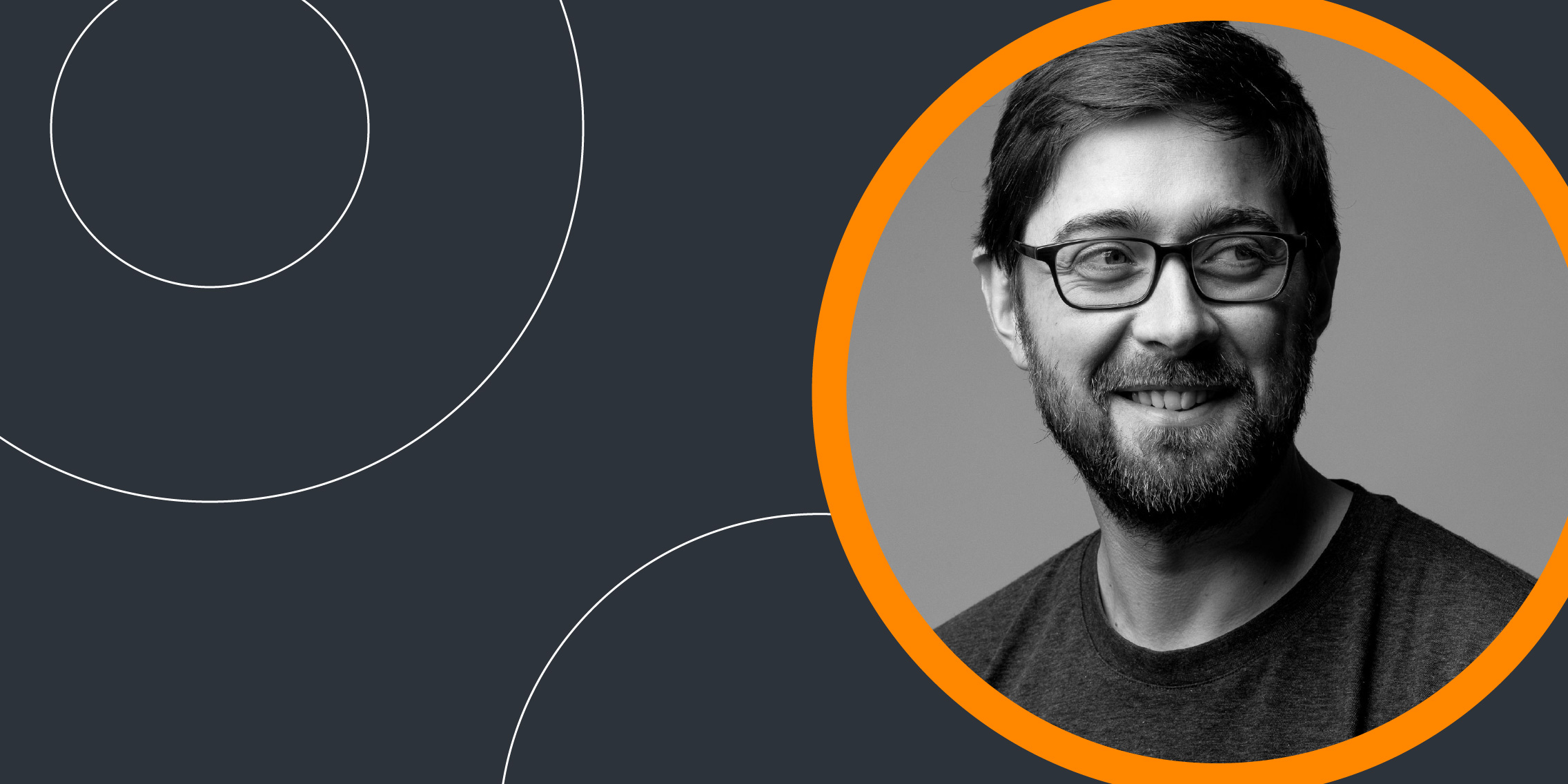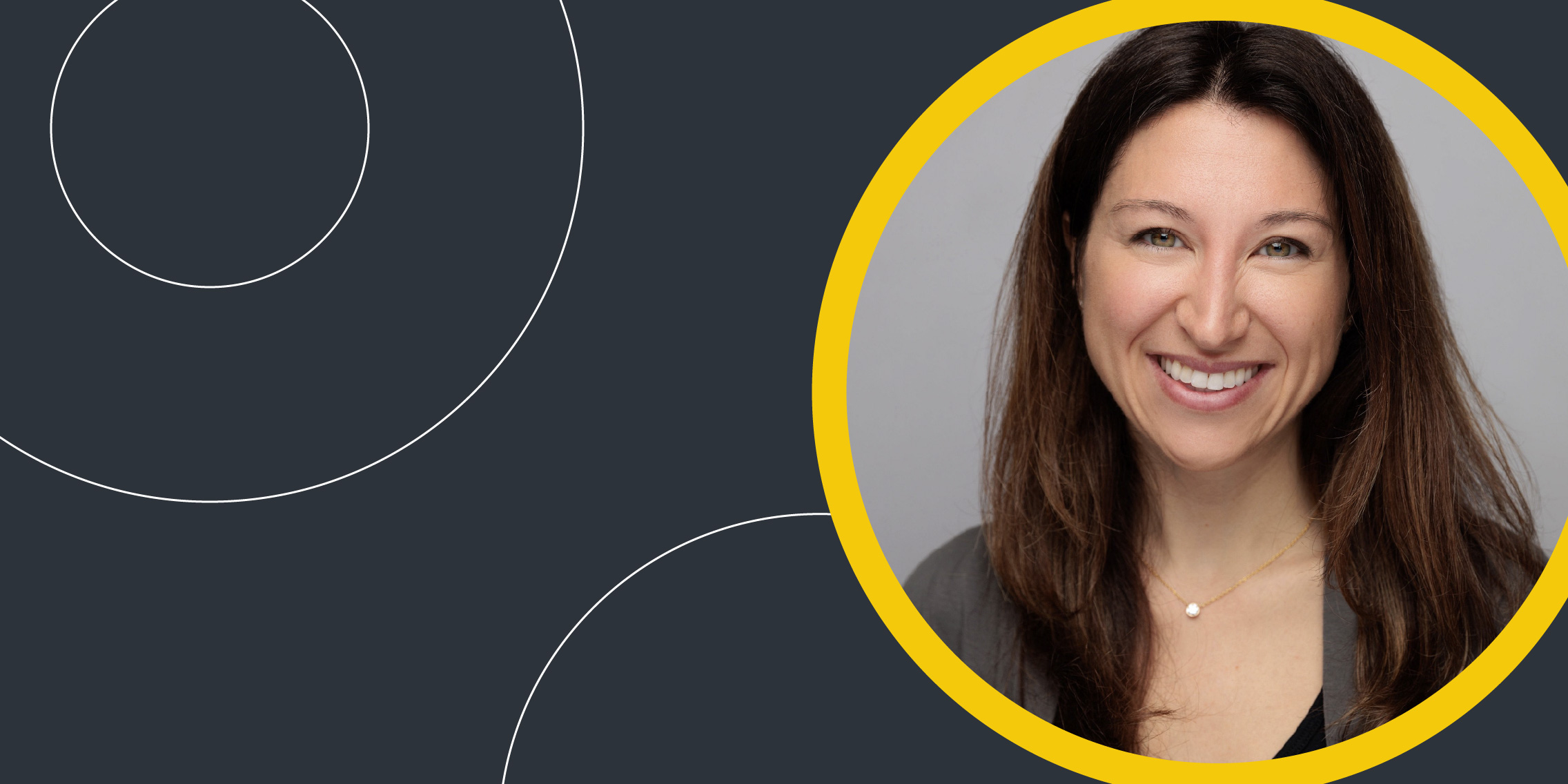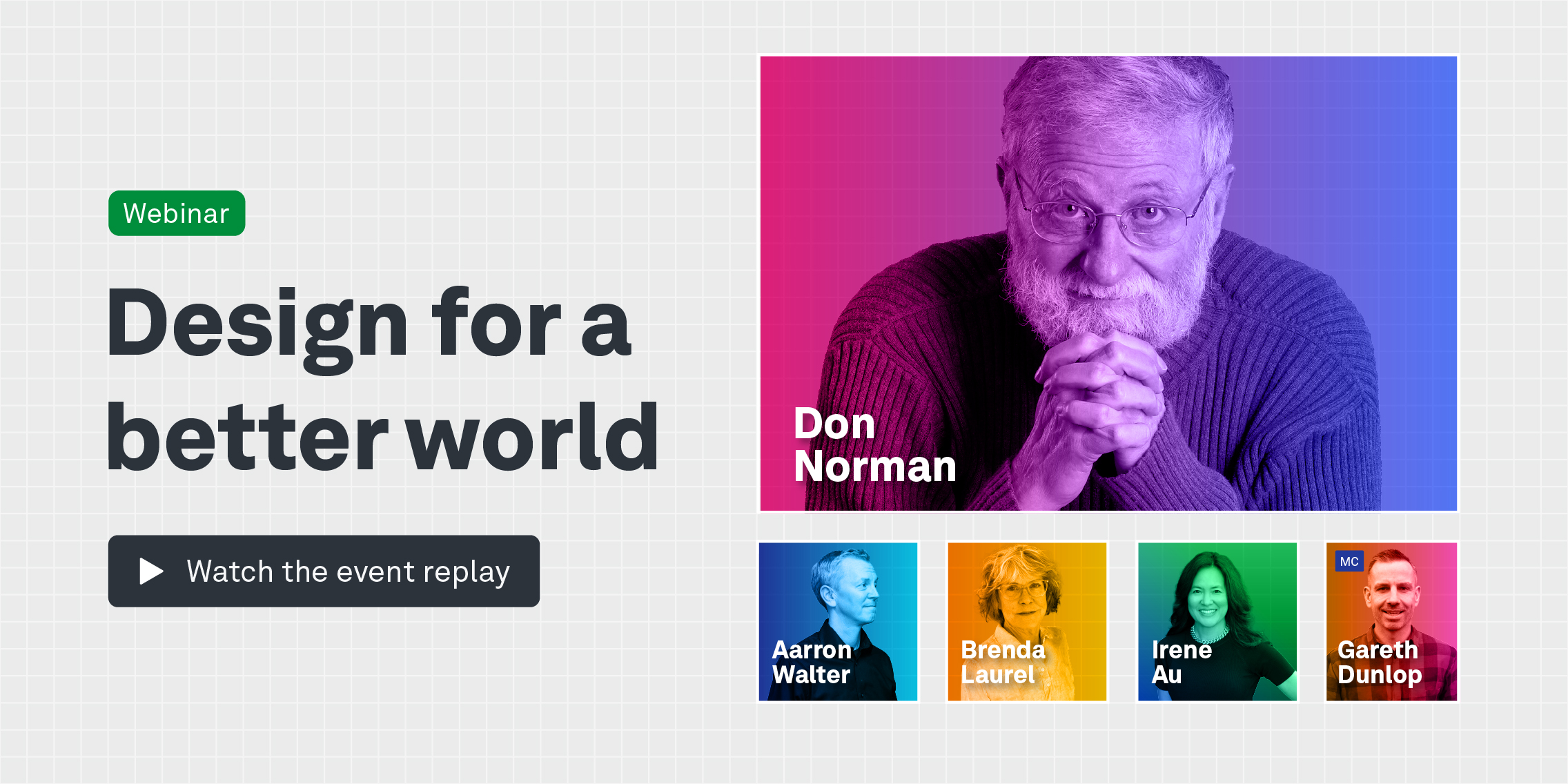Morgan Chin is a Product Designer who specialises in Virtual Reality at Meta in Virtual Reality and we were so lucky to have her as a guest during our recent UX Insiders: UX of VR live event.
With a background as an elementary school teacher, she transitioned into the field of UX three years ago. She achieved a Masters degree in Human Computer Interaction from Georgia Tech and began an internship with Meta shortly after graduating. This internship turned into a full-time role and she very kind told us about her professional journey into UX and the learning curve around the UX of VR.
You can watch the full event through this link but here are some of the highlights from our conversation.
What was it that first appealed to you about UX?
So I have always wanted to do something that’s analytical as well as creative. And I could not figure out what that thing was. I would spend so much time searching and looking. I had an uncle call my husband and say like, “Hey, she would probably like UX design”. And I’m like, “What? What is this, I’ve never heard of it”.
And then I watched YouTube videos. And I was like, “Wait a minute, this is exactly what I’ve been looking for. Because I can do research, I can analyse the research, I can change that into designs, I can design these really cool things and solve problems that people have”. It sounded like just the thing.
When I decided to apply for grad school, I had to make a portfolio. And in making that portfolio, that’s when I knew I was like, “Oh, yeah, this is a thing I’ve been looking for”. And I’ve been sold ever since.
How far into your time at Meta was it until you started working with VR?
So I actually started working with VR at Meta, if that helps anyone to be encouraged. I applied for the AR/VR internship, having made like two AR experiences. I didn’t think they would respond, because I’m like, “I have no experience, but I’m just going to apply and like apply other places”. And they did.
And so my first time was putting on my headset, the first week of my job, and I was just like, “Whoa, like, this is amazing”. I was blown away and just kind of fell in love.
And so I learned a lot on the job through that summer at my internship.
What was that learning curve like? Did you have to take on any additional courses? Or were you just learning on the go?
It was winter when I got this internship [was offered a place]. And so I knew it was coming. I took a mixed reality class at Georgia Tech, my second semester right before my internship. And that really helped me just kind of learn more about the history. We read a lot of articles, we learned more about the design processes, just get my feet a little bit wet. We did a lot of like WebXR and then a lot of stuff I learned on my own.
I would just find random articles, random videos, to watch and learn. I would watch people design things online and kind of learn from that.
And then I would learn a lot from my teammates at work. I would see their design process, I would listen to how they were thinking about things when they were making things and I would absorb all of that.
Who do you work with on a day-to-day basis?
Let me start this by saying on a VR team, especially at Meta, you’re going to have a larger team than what you would be typically used to. We have a lot of specialists. Now I work with software engineers that are front end and back end. I work with product managers, our data scientist, UX researchers, technical artist, UI artists, 3D artist, design prototypers, a lot of different people in marketing and communications.
Sometimes we will have technical programme managers, we will have design programme managers So there’s a lot of different people who are all on this team helping to make everything run smoothly. So it’s bigger team than anywhere I’ve ever worked previous to Meta.
It’s really fun, though. I really enjoy it because it seems like everyone is an expert at their thing.
And so it’s just cool to see the feature pass through the process and back and forth with everyone contributing their ideas. And people have really great ideas.
How much knowledge on XR tools do you need to break into the field?
None! None. You don’t need any. I did not have any. Especially for internships, they’re expecting you to learn and grow. They’re expecting you to come there with just an excitement and an interest in VR. I would say, if you’re looking for full time jobs, I wouldn’t have none. I would definitely try to learn a little bit about the tools learn, a little bit about Unity, because you have to think you’re competing against other people for the same job and you want to stand out, so you can’t have none.
But there might be someone else who has experience in Unity, or something like that. So I would definitely take the time to learn it. You don’t have to be perfect at it, especially at a company like mine, where the prototypers are really doing a lot of the prototyping. Designers do prototype, but that’s the prototypers main responsibility in their role. But being familiar with these programmes, being able to say, “Hey, I did this XYZ thing on my own in Unity” would really help as well.
What VR headsets would you recommend for a user designer who’s just starting out?
The cheapest one that you can get! I always say, “Wait,” because we don’t want the price of headsets to keep you away from being able to be a part of this space.
And that’s one of the things I’m really passionate about, is making sure that it’s equitable and accessible to all people.
The cheapest headset that you can afford is the one that you should get and start there. And you know, as time goes on, maybe you save up more money, or you’re able to buy maybe a more expensive headset.
For me personally, I use the Quest 2 and I’m perfectly fine with that. Maybe one day I’ll buy multiple headsets or, you know, just different headsets. But for now, I just use that one. And I would say try anything you can get your hands on. And if you can’t get your hands on a headset, maybe you explore WebXR or WebVR and how you can use your Chrome browser to do VR experiences, anything you can do to get started.
How do we prepare people for VR?
I don’t know if there is a moment where you’re just like “I’m ready to go”. But we do have some things you think about as a designer. When you are designing experiences, you always want to think about people who are going to be newer, who have maybe never put on a headset, and then people who are more seasoned.
And so one benefit for you all who have minimal experience. When you do join a team – and maybe you’re newer to VR or newer to that app – you’re going to come with a fresh perspective that the team doesn’t have because they’re used to seeing it and using it and they’re kind of deep in it. Whereas you can take a step back from a brand new user and be like, “Hey, this actually doesn’t make sense”.
Some things that we specifically do are some issues with motion sickness. And so a lot of apps will give you options for how you move. So you’ll have teleport versus slide. The people who are a bit newer to the app might use teleport – it just kind of jumps you forward. Whereas slide moves you. Some apps have a black circle that makes you focus on one area when you’re moving or when you’re building something to help with that.
We also think about how we can use raycasting to eliminate people needing to move a lot as well. And one suggestion I would have is just start off with shorter periods. For your play session, just short periods of time and get your VR legs, as they call them. Spend more and more time each session in VR and that will help you to it takes some adjusting. Even for me now, there’s certain like apps that I can’t use, because even still, they make you a little nauseous. So that just might be the case for now.
How soon do you think VR will become a daily part of our lives?
So I am no futurist. So I cannot tell you the exact answer. But I feel like it’s not going to be this year or maybe next year. I think we still have some work to do to make sure that, first off, VR headsets are accessible and affordable to everyone. I think that’s a really big thing that we need to keep working on. And then we also have a lot of people who still get nauseous or motion sick when using headset. So that’s something that we also need to be thinking about how we can improve. So I think it’s still a few years off before it’s an every day type of thing.

